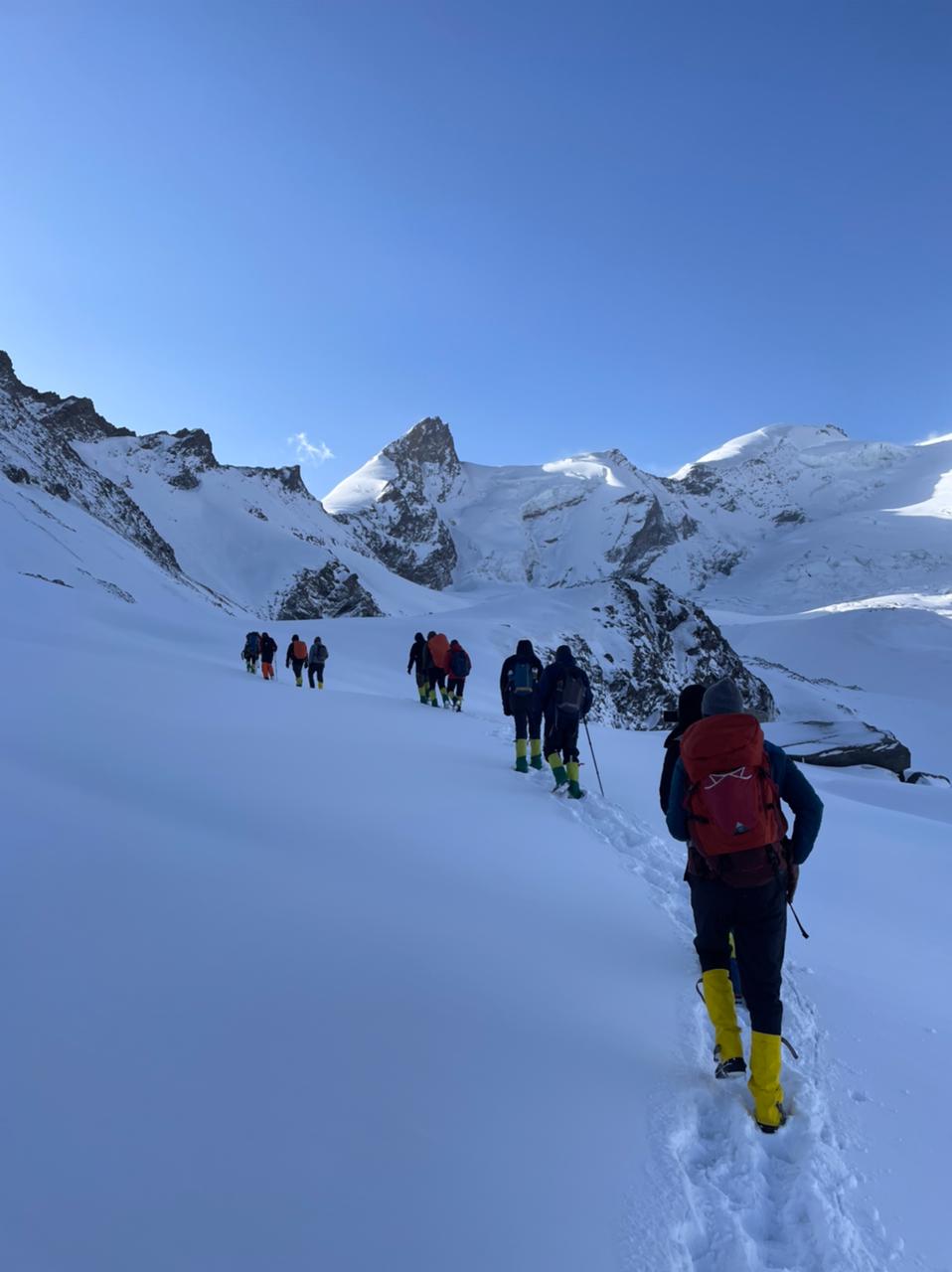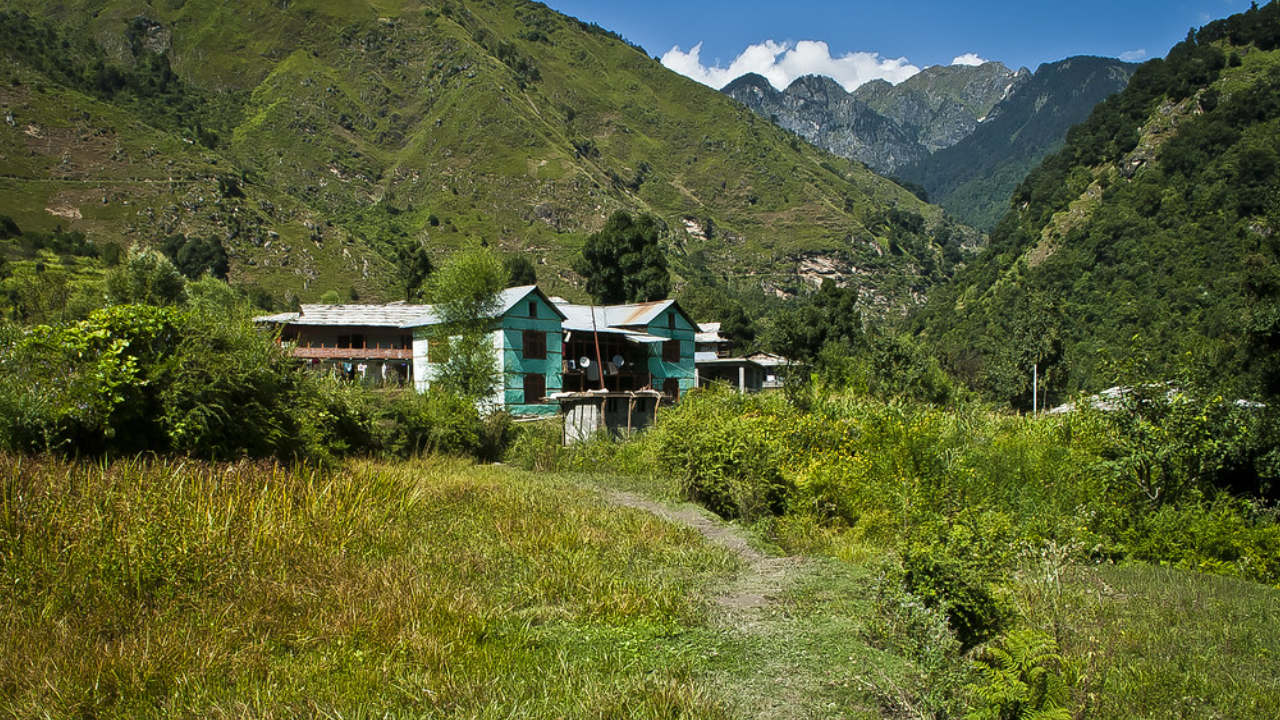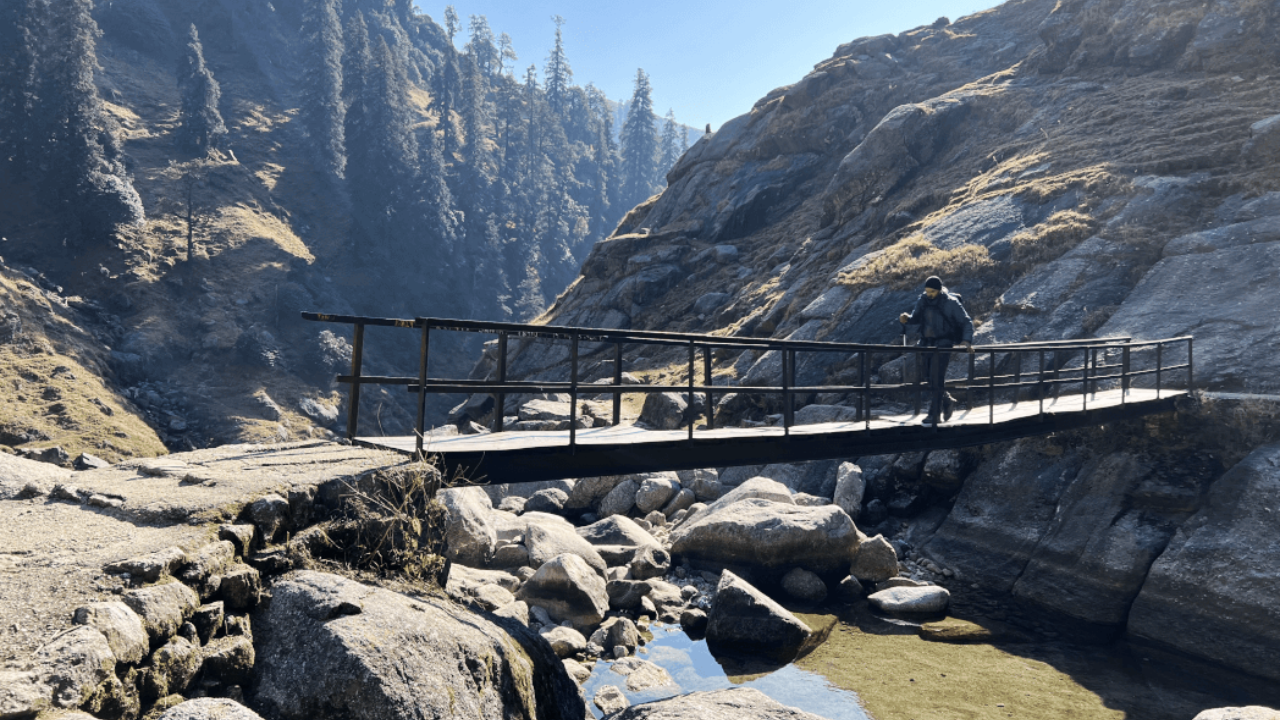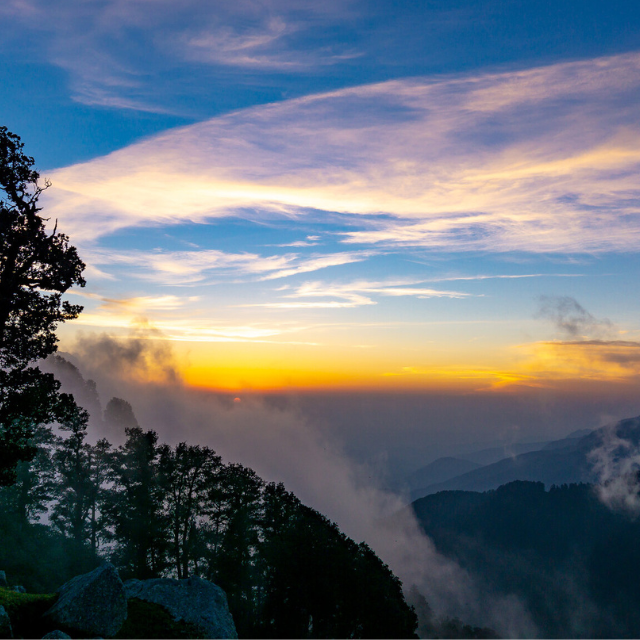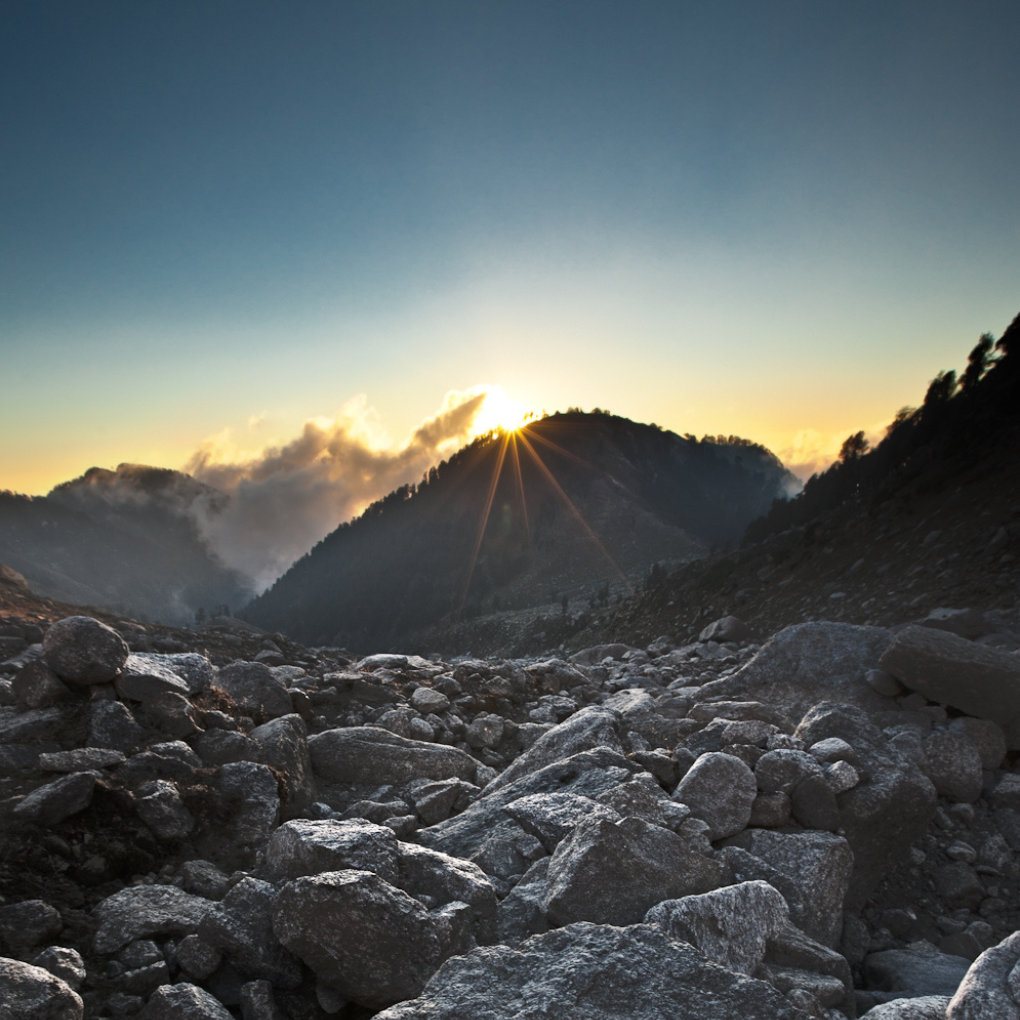
Sainj Valley Trek
2 Days
6 Km
6,875 ft
12
Easy
The Sainj Valley Trek is serene and offbeat in Himachal Pradesh, located within the Great Himalayan National Park (GHNP), a UNESCO World Heritage Site. This lesser-explored trek offers a perfect blend of lush green meadows, dense pine forests, pristine rivers, and remote Himalayan villages. Ideal for nature lovers and peace seekers, the trek provides breathtaking views of the untouched beauty of the Himalayas without the heavy tourist footfall.
Why This Trek?
- Less Explored & Peaceful: Escape the crowds and immerse yourself in the untouched wilderness.
- Part of GHNP: A trek through a UNESCO-listed biodiversity hotspot with rare flora and fauna.
- Cultural Experience: Explore charming Himalayan villages like Shangarh and Raila, rich in tradition and local heritage.
- Stunning Landscapes: Walk through alpine meadows, dense forests, and by the Sainj River, offering diverse natural beauty.
- Easy to Moderate Trek: Perfect for beginners and those seeking a short Himalayan adventure.
Included/Excluded
Select Dates
Adult
₹2,899 per person
Children
₹2,899 per person
Guest in maximum
BOOK NOWItinerary for
Sainj Valley Trek
Day 1
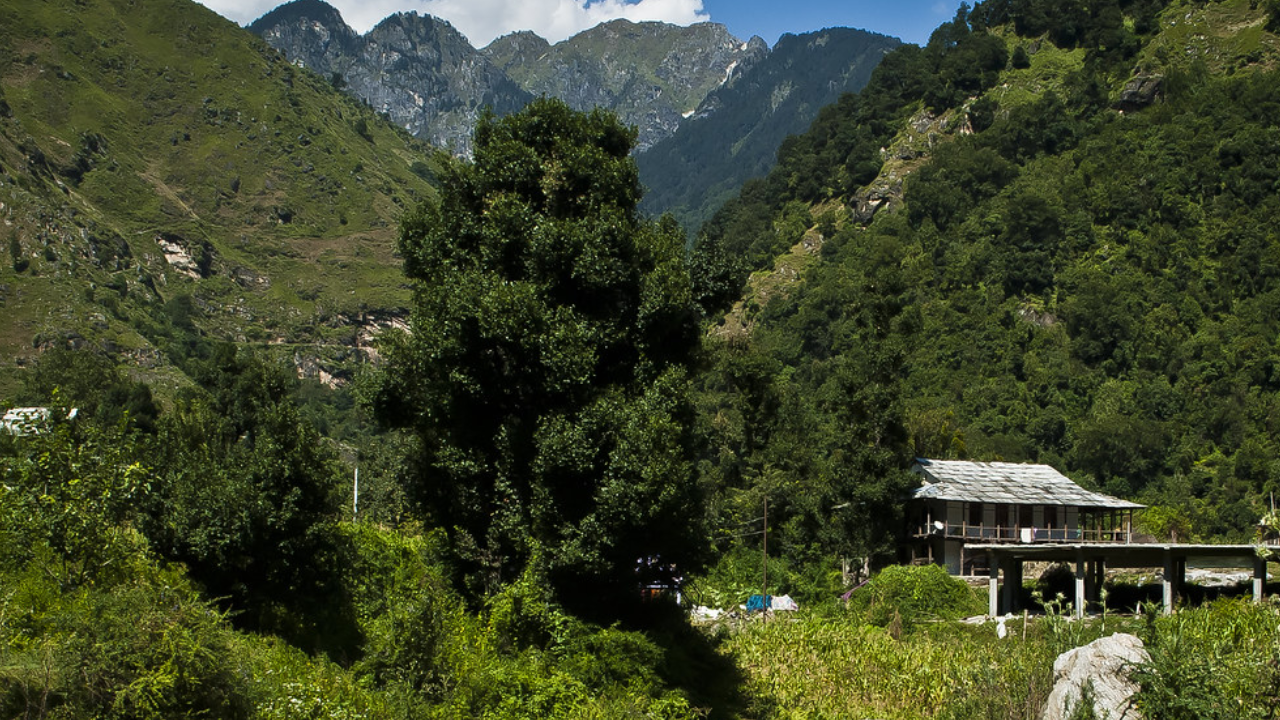
Day 2

Complete Sainj Valley Trek Information
The best time for the Sainj Valley Trek is March to June (spring-summer) and September to November (autumn). Spring (March- May) offers pleasant weather and blooming flowers, while autumn (September-November) provides crisp air and clear mountain views. Winters (December-February) bring snowfall, making the trek more challenging, and monsoons (July-August) should be avoided due to slippery trails and landslides.
By Air
-
The nearest airport to Aut is Kullu-Manali Airport (Bhuntar Airport, KUU).
-
Distance: ~40 km from Aut
How to Reach from Bhuntar:
Take a taxi or local bus from Bhuntar to Aut (1-hour journey).
Alternative airports:
-
Chandigarh Airport (IXC) (~230 km) – More flight options.
-
Indira Gandhi International Airport, Delhi (DEL) (~470 km) – Best for international travelers.
By Train
The nearest major railway stations are:
-
Chandigarh Railway Station (CDG) (~230 km)
-
Joginder Nagar Railway Station (~125 km) – Connected via narrow-gauge from Pathankot.
How to Reach from Chandigarh:
Take a bus or taxi to Aut (~8-10 hours).
By Road
Aut is well-connected by road via NH3 (Delhi-Manali Highway).
From Delhi
-
By Bus: Take an overnight Volvo or HRTC bus from Delhi (ISBT Kashmiri Gate) to Manali and get down at Aut Tunnel (~10-12 hours).
-
By Car: Drive from Delhi → Chandigarh → Mandi → Aut (~470 km, ~10-12 hours).
From Chandigarh
-
By Bus: Take a direct bus to Manali and get down at Aut Tunnel (~8 hours).
-
By Car: Drive via Bilaspur → Mandi → Aut (~230 km, ~6-7 hours).
From Bhuntar
Local buses and taxis are available to Aut (~1 hour).
Pack smart, trek safe!
Ensure you're prepared for every adventure with this essential checklist of gear and supplies. Whether you're a beginner or a seasoned trekker, the right equipment makes all the difference. Download checklist's pdf here
Basic Gear
| Backpack with Rain Cover | (40 - 50 ltr) Comfortable Shoulder Straps |
| Day pack with Rain Cover | 20 - 30 ltr (If off-load opted) |
| Walking stick | Advisable (At least one) |
| Water Bottle / Hydration pack | 2 Bottles(1 liter each), Hydration Pack 1 (Pack) + Bottle |
| Small size tiffin/lunch box | 1 Nos |
| Snacks | Energy bars, dry fruits, electral/ors |
| Personal Medical Kit | Consult your doctor |
Clothing
| T-Shirt (Synthetic quick dry) | 1 Full & 1 Half sleeves |
| Fleece T-shirt | 1 Nos |
| Wind stopper / Fleece jacket | 1 Nos |
| Windproof Jacket | 1 Nos |
| Down feather / Hollow jacket | 1 Nos |
| Thermal inner (Upper and Lower) | 1 Nos |
| Trek Pant (Synthetic quick dry) | 1 Nos |
| Wind stopper / Fleece Pant | Not required |
| Waterproof gloves | Not required |
| Fleece / woollen gloves | 1 Pair |
| Poncho / waterproof Jacket and pant | 1 Nos |
Head Gears
| Head torch | 1 Nos. (Avoid Hand torch) |
| Sun cap | 1 Nos. (One that covers the neck as well) |
| Woolen cap | 1 Nos. |
| Balaclava | Not required |
| Buff / Neck-gaiters | 1 Nos |
| Sunglasses | UV with dark side cover, People who wear spectacles - (A)- Use contact lenses | (B)- Photo chromatic glasses |
Foot Gears
| Trekking shoes | 1 Pair (Waterproof, high ankle with good grip) |
| Floaters / flip-flops | 1 Pair |
| Cotton socks | 6 pairs |
| Woollen socks | 1 pairs |
| Gaiters | 1 Pair (provides when required) |
| Micro spikes | 1 Pair (provides when required) |
Personal Utilities
| Sunscreen cream | 1 Nos |
| Moisturiser | 1 Nos |
| Chap-stick / Lip balm | 1 Nos |
| Toothbrush and toothpaste | 1 Nos |
| Toilet paper & Wipes | 1 Nos |
| Soap / hand sanitizers | 1 Nos |
| Antibacterial powder | 1 Nos |
| Quick dry towel | 1 Nos |
At Scoutripper, we understand that plans can change. You can reschedule your booking up to 24 hours before your experience begins. Changes are subject to availability and any applicable price adjustments. Rest easy knowing your adventure is flexible!
At Scoutripper, we value flexibility but also adhere to clear cancellation guidelines:
- Full Refund: Cancel at least 6 full days before the experience starts.
- 50% Refund: Cancel between 2 and 6 full days before the start time.
- No Refund: Cancellations made less than 2 full days before the experience start time will not be refunded.
Additionally:
- Changes are not accepted less than 2 full days before the experience begins.
- Cut-off times are based on the local time of the experience.
- Some experiences require a minimum number of participants. If the minimum isn’t met, you’ll receive a full refund or the option to reschedule.
Enjoy peace of mind with our clear and transparent policies!
Mobile Network & Internet:
-
Jio & Airtel networks work in Sainj Valley, but connectivity weakens as you go deeper into the trek.
-
No network in remote campsites like Pundrik Lake and Meadows.
-
Wi-Fi is not available along the trail.
ATMs & Cash Availability:
-
Last ATM: Available in Sainj town, but can be unreliable.
-
Best option: Withdraw cash in Kullu or Mandi before starting the trek.
-
Carry ₹3,000–5,000 for food, local transport, and emergency expenses.
Electricity & Charging Points:
-
Electricity is available in Sainj town and nearby villages.
-
No charging points in remote campsites; teahouses may provide limited charging for a fee.
-
Carry a power bank (10,000mAh+) for backup.
-
Cold temperatures can drain batteries faster, so keep them warm inside your sleeping bag.
FAQs about
Sainj Valley Trek
The Sainj Valley Trek is located in Himachal Pradesh, India, within the Great Himalayan National Park (GHNP), a UNESCO World Heritage Site. It is a hidden gem offering lush green meadows, dense forests, and charming Himachali villages.
The trek is easy to moderate, making it perfect for beginners and nature lovers. The trails are mostly gentle with gradual ascents, but some sections require stamina and endurance.
The best time for the trek is March to June and September to November. Spring and summer bring green landscapes and blooming flowers, while autumn offers clear skies and pleasant weather. Winters (December-February) bring snowfall, making the trek more challenging.
The Sainj Valley Trek typically takes 3 to 5 days, depending on the chosen route and pace. Some trekkers extend their journey to visit Raktisar, the origin of the Sainj River, which takes around 7 days.
Yes, since the trek passes through the Great Himalayan National Park (GHNP), you need an entry permit. It can be obtained from the GHNP office in Sai Ropa or online.
The trek usually reaches 3,800 meters (12,467 feet) at Raktisar, which is the highest point for those extending their trek. However, the meadows and villages in the valley are between 2,000 to 3,000 meters.
Trekkers can stay in homestays in Sainj Valley villages like Shangarh and Lapah, offering a cultural experience with local Himachali families. For higher altitudes, camping is the only option.
Since the trek stays mostly below 4,000 meters, the risk of altitude sickness is low. However, proper acclimatization, hydration, and a gradual ascent are recommended, especially for those trekking to Raktisar.
In villages like Shangarh and Lapah, homestays provide traditional Himachali food like siddu, dal-chawal, rajma, and parathas. At higher campsites, trekkers need to carry their own food or arrange meals through guides.
The Sainj Valley Trek is ideal for those seeking a peaceful, offbeat Himalayan experience. It offers beautiful meadows, rich biodiversity, remote village culture, and stunning mountain views, all within the Great Himalayan National Park. It is also a great trek for wildlife lovers and photographers.


